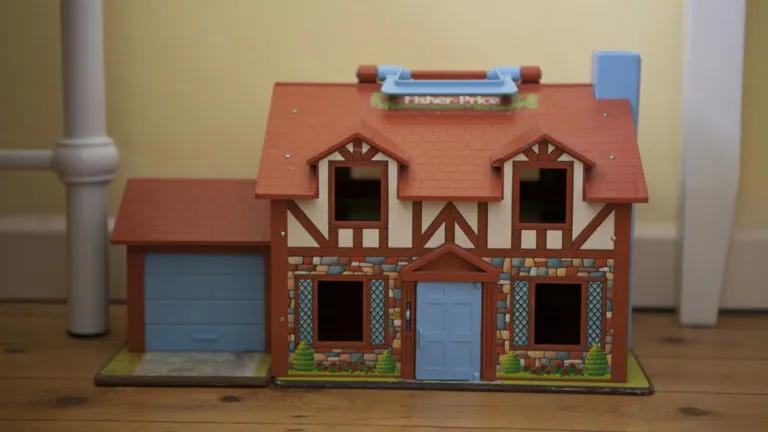Losing the plot: part 2
Published: by Robin White

Public Land: where have we gone wrong?
Earlier this year, we outlined how the Public Land for Housing Programme (PLfH) has proven a spectacular failure if we judge it by a metric of building homes. A metric that – given the very name of the programme – seems reasonably fair to use.
In fact, we demonstrated that over the decade the programme has been running, just 27,611 homes have been delivered. That’s just 15% of those that could have been delivered based on how much land has been sold.
Don’t worry though, it gets worse. Of those 27,611, only 1,410 homes are expected to be any kind of ‘affordable housing’ – let alone the social rent homes England needs most urgently. That’s not quite one percent.
Where has it all gone wrong
The first question to ask when something is not working is, of course, why?
Why is it that a programme with such a laudable aim as building some of the homes we desperately need on the land we already have not working out? After all, this makes sense, right?
Well it can make sense if you do it right. Unfortunately, the PLfH is very much doing it wrong.
Firstly, the programme is inherently flawed by the very nature of the objectives that it works towards. The two objectives are:
- to dispose of enough land to deliver 160,000 new homes
- to raise £5 billion in sales receipts
To deal with them backwards is easiest to explain how these two objectives simply can’t help you build homes. Including a requirement to raise £5 billion incentivises the disposing body (NHS England, Ministry of Defence, Ministry of Justice etc.) to seek the best possible price for the land. However, as Shelter have pointed out on many occasions, high land prices = expensive homes getting built very slowly.
So objective number two – pretty unhelpful.
Objective number one though is also flawed, not least in the very specific language it employs around ‘enough land to deliver’. Note that is not a target for homes built or even homes started but a target based around what ‘might’ be possible – the number of homes which could technically fit on the land.
Without delving into any real detail then we can see already that this programme may well have been doomed to failure from the very outset.
Digging deeper: a failure to capture public land value for the public good
Whenever land is allocated for housing development or granted planning permission its value increases – sometimes by vast amounts if it moves from being valued as agricultural to residential use. A question that many inside and outside government have grappled with in recent years is how we ensure that this newly created value is shared fairly between landowners, developers and local communities.
In recent times, there has been an abject failure to make sure this is being done. New market sale developments continue to pop up all over the country and yet we continue to hear stories of those new places lacking affordable housing, lacking local services, and failing to put design and quality at their heart. And this is what we are talking about when we say sharing value fairly – it means making sure that land trader profits don’t come at the expense of the things that make good homes and good communities.
The fact that this is happening on privately owned land when it is sold for development is one thing though – the fact that it is happening on publicly owned land is quite another.
As Shelter has shown in our Grounds for Change report, the easiest and most effective way to capture the value of land for the public benefit is to already own the land. This avoids the need to pay for private land at inflated prices, which assume it will be used to build the most profitable kinds of housing, rather than the social homes we need most urgently. Given this, the use of public land to help solve the housing crisis actually makes a lot of sense and has the potential to make a material impact.
We need to be making sure that public land – an asset the government administers on behalf of the people – is being put to use in the way most beneficial to the public.
No silver bullet but a chance to prove what is possible
On its own, developing public land is not the answer to the housing crisis of course. Many areas with acute social housing shortfalls lack surplus public land, while some surplus public land is located in areas with low housing demand or poor connections to local cities, towns, and villages. For this reason, simply saying there is a lot of public land and, therefore, it is a solution to the housing crisis is over simplistic. However, ending the housing emergency will require big changes to the way we approach housing in this country and doing better on public land when it is in the right place can be a part of the solution.
For example, the award-winning Goldsmith Street in Norwich has shown everyone that high quality, energy efficient and beautiful social housing is not a pipe dream but a possibility. It has helped move debates about the role of social housing in delivering better housing in general from the hypothetical and into the realistic. And – perhaps unsurprisingly – it was built on land Norwich owned.
Other plots of public land can be part of a similar movement. A dual approach where we ensure that in the areas it exists public land plays a vital role in meeting local needs but also plays a role in proving to other areas that ‘better’ is perhaps possible.
So, if the system isn’t working, what would? That’s the question we will be tackling in part 3 of our public land blog series.